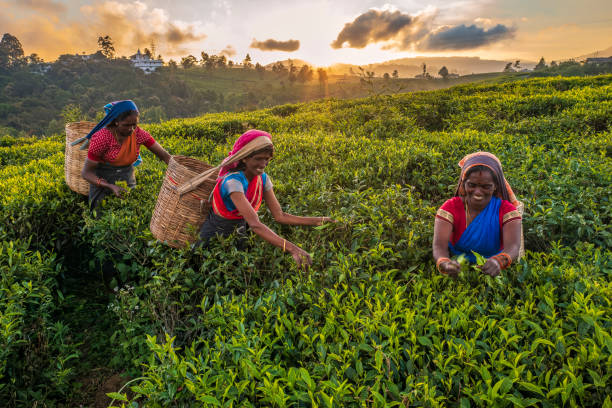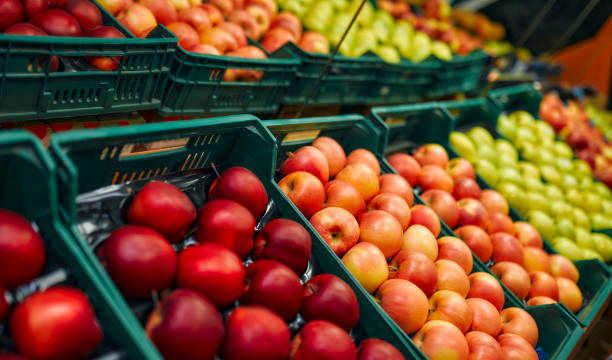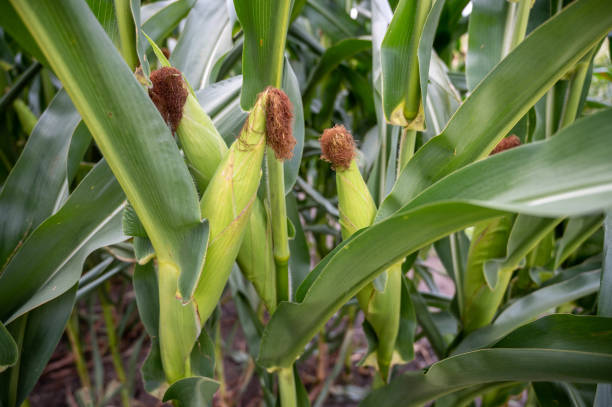Kenya’s agricultural sector plays a pivotal role in the nation’s economy, contributing significantly to employment, export earnings, and food security.
In this comprehensive exploration, we delve into Kenya’s diverse agricultural landscape, highlighting its leading produce, from the iconic tea and coffee to the burgeoning horticultural industry and staple crops like maize and dairy products.
Tea:
Kenya ranks among the world’s top tea producers, renowned for its high-quality black tea. The favorable climate and rich soils of regions like Kericho and Nandi provide ideal conditions for tea cultivation.

The sector employs thousands of Kenyans and generates substantial export revenue, contributing significantly to the country’s foreign exchange earnings.
Coffee:
Coffee production has been a traditional mainstay of Kenya’s agricultural sector. The high-altitude regions, including Nyeri, Kirinyaga, and Murang’a, are well-suited for coffee cultivation.

Kenyan coffee is prized for its distinct flavor profile, characterized by bright acidity and fruity undertones. Despite facing challenges such as fluctuating prices and climate change, coffee remains a vital crop for many smallholder farmers.
Horticultural Products:
Kenya has emerged as a leading exporter of horticultural products, including flowers, vegetables, and fruits. The country’s favorable climate and proximity to international markets have fueled the growth of this sector.
From roses and carnations to snow peas and French beans, Kenyan horticultural products are in high demand worldwide. The industry has provided employment opportunities and contributed significantly to the country’s GDP.
Fruits:
Kenya boasts a rich diversity of fruits, ranging from tropical delights like mangoes, pineapples, and bananas to exotic varieties such as avocados and passion fruits.

These fruits thrive in various agro-ecological zones across the country, with regions like Murang’a and Meru being notable production hubs. Fruits play a crucial role in both domestic consumption and export markets, offering nutritional benefits and economic opportunities for farmers.
Maize:
As a staple food crop, maize occupies a central position in Kenya’s agricultural landscape. It serves as a primary source of calories for the majority of the population and is essential for food security.

Maize cultivation is widespread across the country, with regions like Uasin Gishu and Trans Nzoia being prominent maize-growing areas.
Despitefully challenges such as pests, diseases, and erratic weather patterns, maize production remains vital for sustenance and livelihoods.
Dairy Products:
The dairy industry plays a significant role in Kenya’s agricultural sector, providing essential nutrients and livelihoods for millions of people.
Smallholder dairy farmers contribute the majority of milk production, with regions like Kiambu and Nakuru being key dairy hubs.


Milk, yogurt, and cheese are among the dairy products consumed domestically, while butter and powdered milk are exported to regional markets. The sector continues to grow, driven by rising demand and investments in value addition.
Kenya’s agricultural sector is characterized by diversity and resilience, with various crops and products contributing to the nation’s economic development and food security.
From the iconic tea and coffee to the thriving horticultural industry and staple crops like maize and dairy products, agriculture remains a cornerstone of Kenya’s economy.
As the country faces evolving challenges and opportunities, sustainable agricultural practices and investments in research and technology will be crucial for ensuring the sector’s continued growth and prosperity.
Kenya’s agricultural sector is a dynamic and multifaceted domain, deeply intertwined with the nation’s economy, culture, and food security.
In this extended exploration, we delve further into the factors shaping Kenya’s agricultural landscape, including market trends, technological innovations, policy frameworks, and environmental challenges.
By examining these key elements, we gain a deeper understanding of Kenya’s agricultural potential and the opportunities for sustainable growth and development.
Some agricultural policies and guidelines.
Market Trends:
Kenya’s agricultural sector operates within a globalized market environment, where both domestic and international demand influence production patterns and trade dynamics.
The rise of middle-class consumers, both domestically and in neighboring countries, has fueled demand for high-value agricultural products such as fruits, vegetables, and processed foods.
Additionally, changing dietary preferences and health consciousness have driven demand for organic and specialty crops, presenting opportunities for Kenyan farmers to diversify their product offerings and capture niche markets.
Technological Innovations:
Technological innovations play a crucial role in enhancing agricultural productivity, efficiency, and resilience in Kenya.
From precision farming techniques and mechanization to digital platforms and agri-tech solutions, technology has the potential to revolutionize the way farmers grow, harvest, and market their produce.
Mobile applications provide farmers with access to weather forecasts, market prices, and agronomic advice, empowering them to make informed decisions and optimize their farming practices.
Furthermore, initiatives such as drip irrigation and greenhouse farming enable farmers to maximize yields while conserving water and minimizing environmental impact.
Policy Frameworks:
Effective policy frameworks are essential for creating an enabling environment for agricultural development and ensuring that farmers have access to the necessary resources and support systems.
In Kenya, government policies and programs focus on promoting sustainable agricultural practices, enhancing market access for smallholder farmers, and addressing challenges such as land tenure issues and agricultural financing.
Initiatives such as the National Agricultural Sector Development Strategy (2010-2020) and the Agricultural Sector Transformation and Growth Strategy (ASTGS) provide strategic guidance and investment priorities for the sector, emphasizing value addition, agro-processing, and market-driven approaches.
Environmental Challenges:
Kenya’s agricultural sector faces various environmental challenges, including climate change, soil degradation, water scarcity, and deforestation.
Erratic weather patterns, characterized by prolonged droughts and erratic rainfall, pose significant risks to crop yields and livestock productivity, particularly for smallholder farmers who rely on rain-fed agriculture.
Soil erosion and nutrient depletion further exacerbate productivity constraints, requiring sustainable land management practices such as conservation agriculture and agroforestry.
Additionally, water scarcity and competition for resources in water-stressed regions like Turkana and Garissa underscore the need for innovative water management strategies and investments in irrigation infrastructure.
Kenya’s agricultural sector is at a critical juncture, poised for transformation and sustainable growth in the face of evolving market trends, technological advancements, policy frameworks, and environmental challenges.
By harnessing the potential of technology, fostering supportive policy environments, and adopting climate-smart agricultural practices, Kenya can unlock new opportunities for agricultural productivity, income generation, and food security.
Moreover, fostering partnerships between government, private sector actors, research institutions, and civil society organizations will be essential for driving innovation, knowledge sharing, and inclusive development across the agricultural value chain.
As Kenya charts its path towards agricultural transformation, it must embrace a holistic and integrated approach that balances economic growth with social equity and environmental sustainability, ensuring that the benefits of agricultural development are equitably shared among all segments of society.
